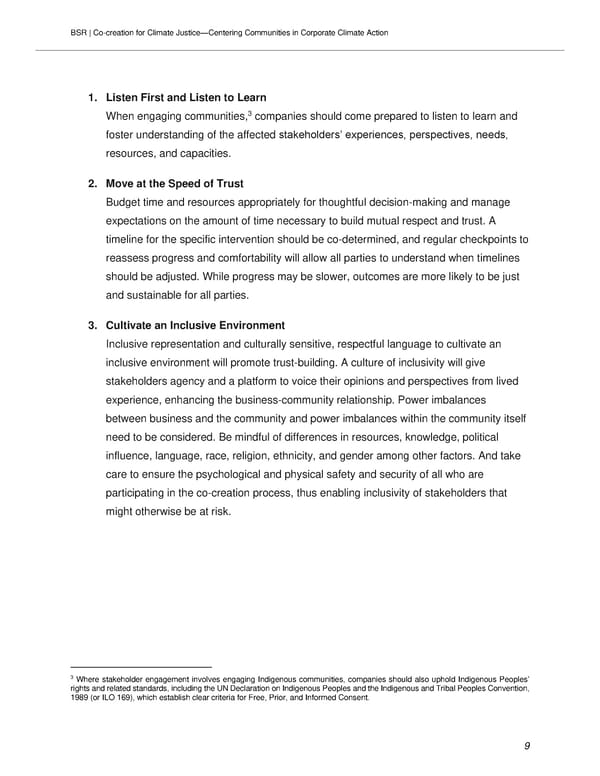BSR | Co-creation for Climate Justice—Centering Communities in Corporate Climate Action 1. Listen First and Listen to Learn 3 When engaging communities, companies should come prepared to listen to learn and foster understanding of the affected stakeholders’ experiences, perspectives, needs, resources, and capacities. 2. Move at the Speed of Trust Budget time and resources appropriately for thoughtful decision-making and manage expectations on the amount of time necessary to build mutual respect and trust. A timeline for the specific intervention should be co-determined, and regular checkpoints to reassess progress and comfortability will allow all parties to understand when timelines should be adjusted. While progress may be slower, outcomes are more likely to be just and sustainable for all parties. 3. Cultivate an Inclusive Environment Inclusive representation and culturally sensitive, respectful language to cultivate an inclusive environment will promote trust-building. A culture of inclusivity will give stakeholders agency and a platform to voice their opinions and perspectives from lived experience, enhancing the business-community relationship. Power imbalances between business and the community and power imbalances within the community itself need to be considered. Be mindful of differences in resources, knowledge, political influence, language, race, religion, ethnicity, and gender among other factors. And take care to ensure the psychological and physical safety and security of all who are participating in the co-creation process, thus enabling inclusivity of stakeholders that might otherwise be at risk. 3 Where stakeholder engagement involves engaging Indigenous communities, companies should also uphold Indigenous Peoples’ rights and related standards, including the UN Declaration on Indigenous Peoples and the Indigenous and Tribal Peoples Convention, 1989 (or ILO 169), which establish clear criteria for Free, Prior, and Informed Consent. 9
 Co-creating Climate Justice Interventions Between Business and Communities Page 8 Page 10
Co-creating Climate Justice Interventions Between Business and Communities Page 8 Page 10